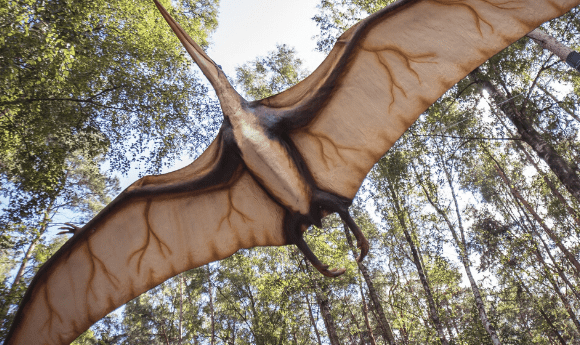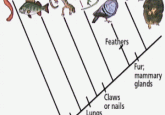Targaryendraco wiedenrothi, first-of-its-name, born from the taxonomical ashes

A species of pterosaurs has been reclassified and assigned to the new genus Targaryendraconia, named after House Targaryen from Game of Thrones.
Originally discovered in 1984 and named in 1990, the phylogenetic affinity of the pterosaurs species Ornithocheirus wiedenrothi has long been disputed. Many paleontologists argue that it did not belong in the genus Ornithocheirus, which has long been associated as a wastebasket genus – one into which many new species with no easily identifiable classification get tossed.
Now, thanks to the discovery of new fossils and analysis methods, the prehistoric creature, along with six other known pterosaurs, has been assigned a newly created genus; Targaryendraconia. Species of the Targaryendraconia genus may be identified by a wingspan of 10–26 ft, combined with narrow snouts that end in teeth that jut forward from the tip of the jaw.
When it came to naming their new genus, the authors looked to popular culture, in particular the Song of Ice and Fire book series and TV show, Game of Thrones. According to the authors, the dark fossils that are characteristic of the Targaryendraco wiedenrothi are similar to the black bones of the dragons of House Targaryen.
 Family, duty, honor: looking at historical parallels to the inbreeding in Europe and Game of Thrones
Family, duty, honor: looking at historical parallels to the inbreeding in Europe and Game of Thrones
We take a look at some of the more hazardous Game of Thrones relationships and their parallels to the history of royal inbreeding in Europe and the disastrous results often associated with the practice.
The pterosaurs species has likely had a strong influence on the representation of dragons in the books and their author, George RR Martin, is said to have taken cues from their anatomy when imagining his version of the fictional species.
In traditional depictions of dragons, they have six limbs; two wings and four legs. However, this does not make biological sense. Lead author of the study Rodrigo Pegas (Universidade Federal do ABC, São Bernardo do Campo, Brazil) argued that, in nature, no vertebrate creature has existed with such a six-limb configuration.
In a recent blog post, Martin expressed his delight at the honor, “especially by the kind words of the discoverer, paleontologist Rodrigo Pegas, who is solidly on [his] side about dragons having two legs, not four.”
Martin went on to note that, sadly, “there is no evidence that the real-life Targaryendraco wiedenrothi actually breathed fire.”
The authors state that the reclassification of the species, a full report of which has been published in the journal Historical Biology, fills in a previously misunderstood ghost lineage for the creature, and highlights that the diversity of species of pterosaurs living during the Cretaceous period is likely higher than originally thought.

